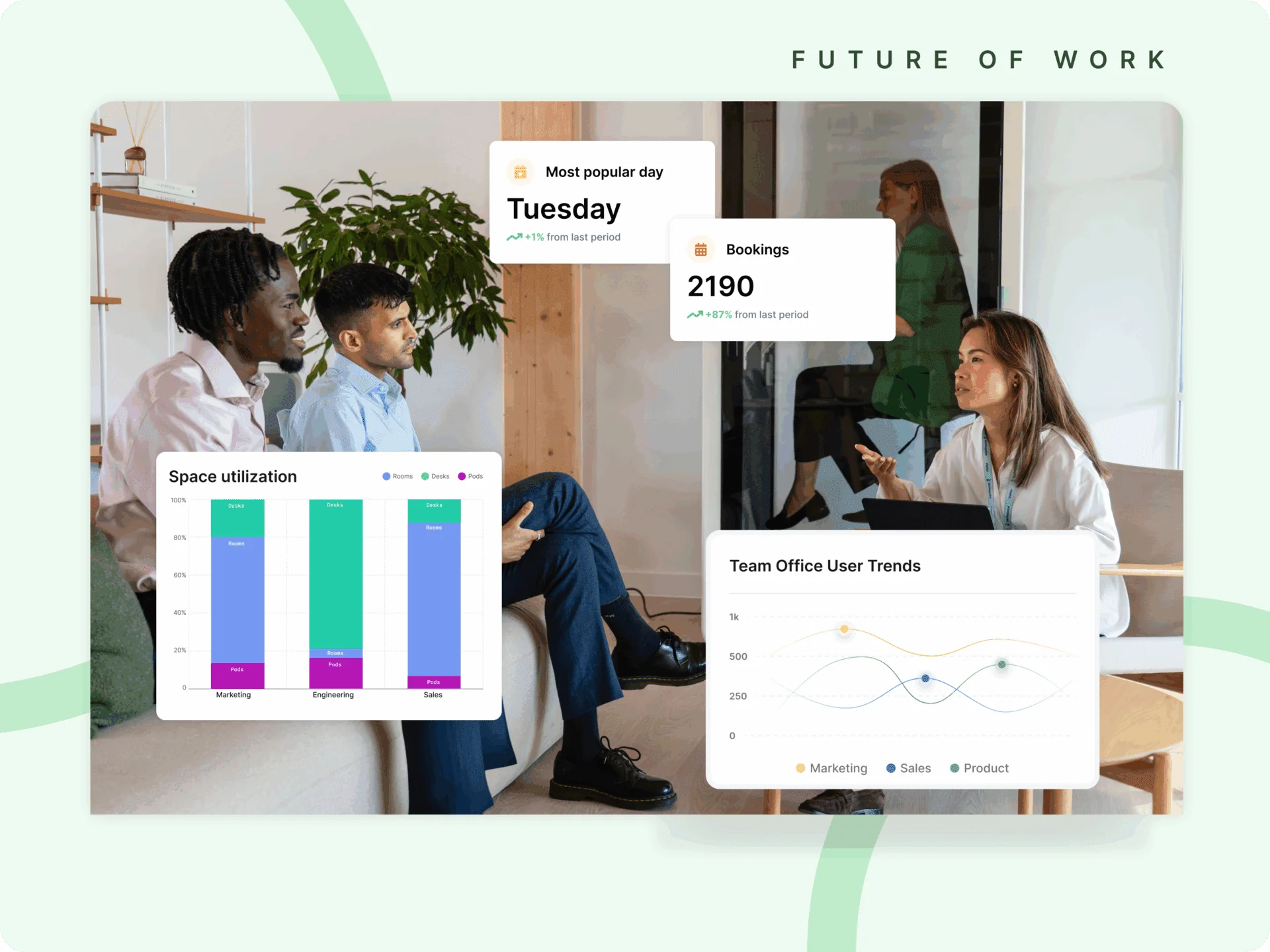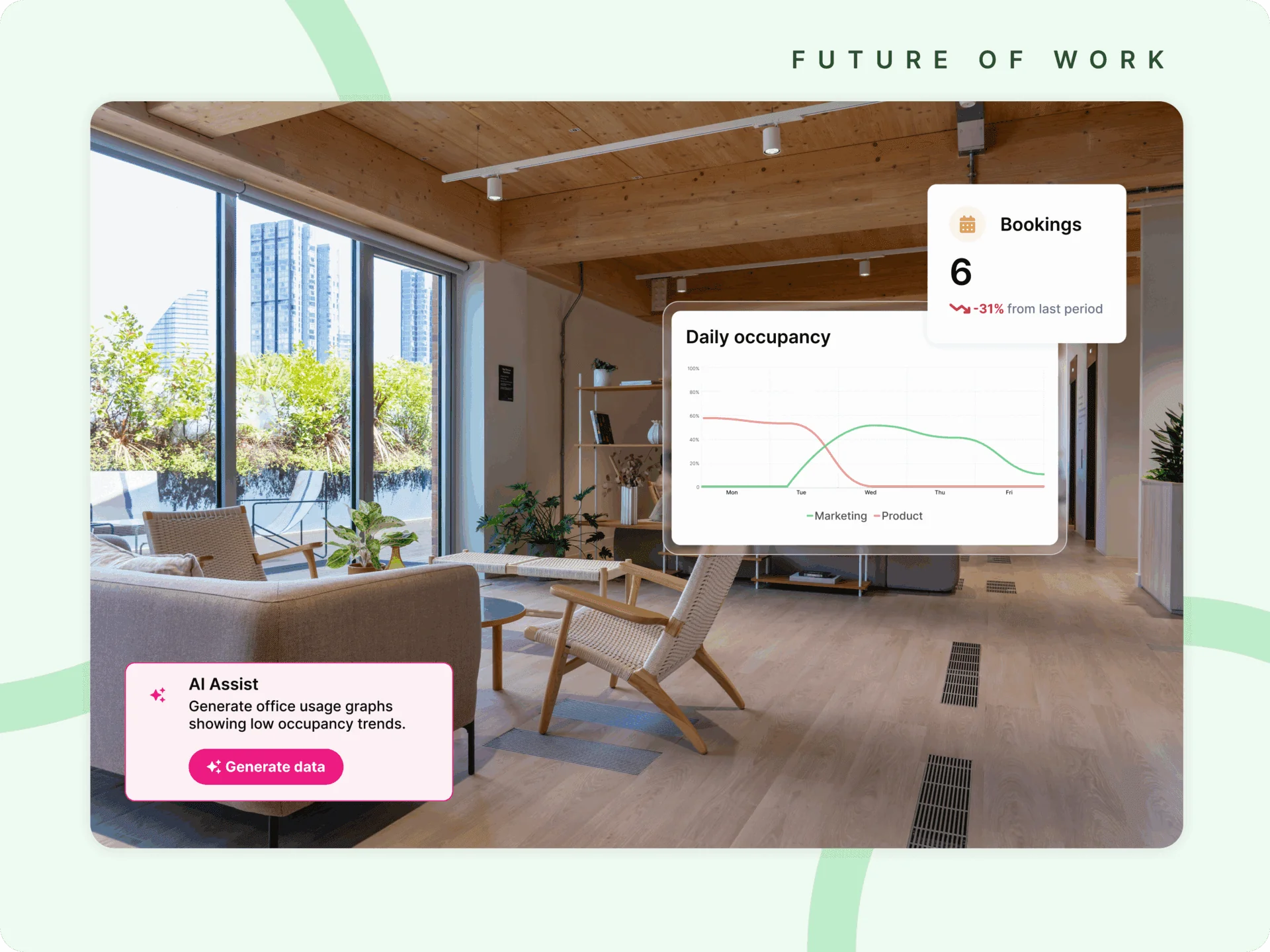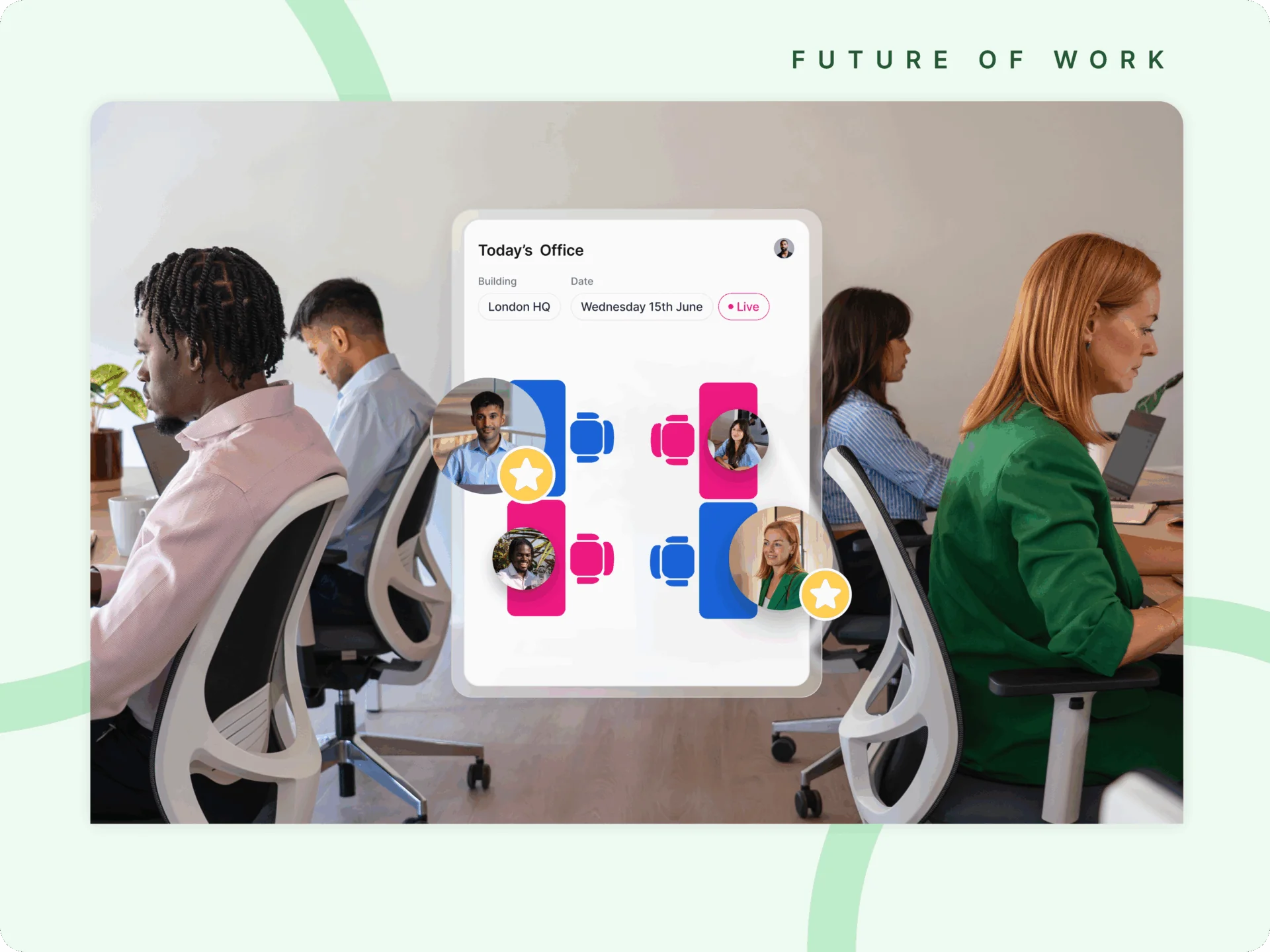In 2020, Shopify was one of the first major companies to go remote-first, famously declaring “office centricity is over.” Now, CEO Tobi Lütke has dropped another future-of-work grenade: from now on, Shopify will be “AI-first” in all its hiring decisions. In other words, if AI can do the job, AI gets the job.
It’s a decisive shift—but it’s not just a talent strategy. It’s a clear sign of where work is going next.
Just like the remote-first shift forced companies to rethink their operating models, an AI-first approach is going to trigger a full-on redesign of how businesses are structured, how teams function, and how work gets done.
Here’s the point that really matters: companies that already run hybrid—flexible, async, distributed—are better prepared for this future than those still stuck in 9-to-5, office-based, legacy workflows.
From Remote-First To AI-First: A Pattern Emerges
Shopify has a track record of spotting macro shifts early. When the pandemic hit, they didn’t try to preserve the office—they scrapped it entirely. In May 2020, they declared that ‘office centricity is over’ and adopted a ‘Digital by Design’ model. This wasn’t just about allowing people to work from home—it meant reimagining how the business operated. Shopify embraced async communication, hired talent regardless of location, and prioritized in-person connection through intentional offsite gatherings instead of relying on daily face time. That move paid off in speed, flexibility, and access to global talent.
This AI-first hiring policy is cut from the same cloth. It’s not about chasing hype—it’s about designing a company that can compete in the next decade, not the last.
And they’re not alone. A 2024 PwC survey found that 73% of US companies have already adopted or planning to adopt AI in some areas of their business, while 49% have “fully integrated” AI into their core business strategy. We’re not waiting for an AI future. We’re already in it.
Why Hybrid Work Is The Real Testing Ground
If you think this AI shift is just about replacing people with machines, you’re missing the bigger picture.
AI isn’t just changing who does the work—it’s changing how work is done. That’s why hybrid work is such a critical testing ground. It already demands:
- Outcome-based performance over time-in-seat
- Decentralized decision-making async collaboration tools like Slack, Notion, and Loom
- Fewer fixed roles, more cross-functional, fluid team structures
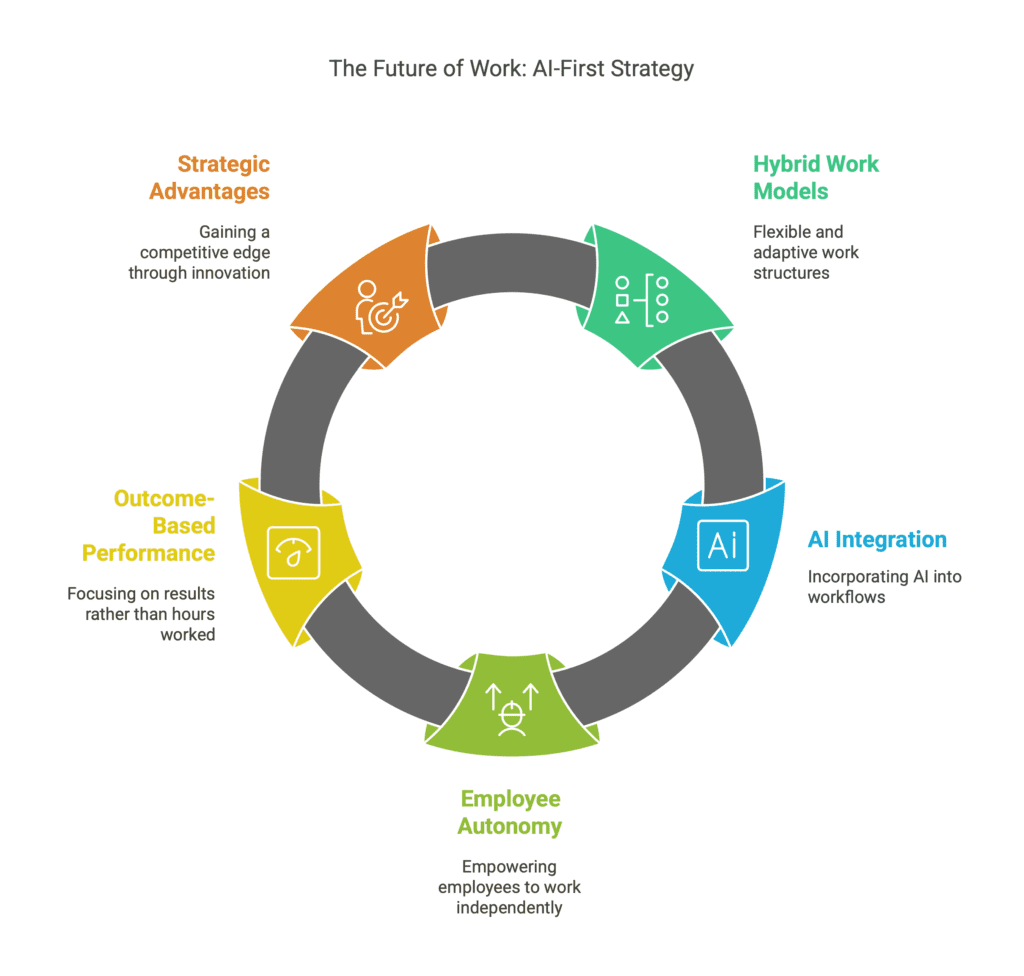
Sound familiar? That’s the same foundation needed to successfully integrate AI into workflows.
In short: Hybrid companies have already started the transformation AI now demands. They’ve broken free from outdated assumptions about presence equaling productivity. They’ve rebuilt trust on flexibility, autonomy, and results.
That’s not just a culture win—it’s a strategic advantage.
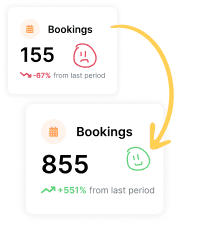
Legacy Models Are The Real Risk
Let’s be clear: the biggest risk right now isn’t AI replacing jobs. It’s companies trying to bolt AI onto outdated, rigid models of work.
Imagine this: a company still doing Monday standups, Tuesday all-hands, and Wednesday check-ins—all in person, all scheduled around availability. Now imagine trying to plug generative AI tools into that system. It’ll break. Or worse, it’ll slow things down even more.
The reality is this: You can’t be AI-first if your operating model is 2013.
The companies that thrive in an AI-first world will be the ones that already:
- Trust employees to work autonomously
- Measure performance by outcomes, not hours
- Coordinate across time zones and tools
- Adapt quickly when new technology reshapes the playing field
In other words: the ones that are already hybrid-ready.
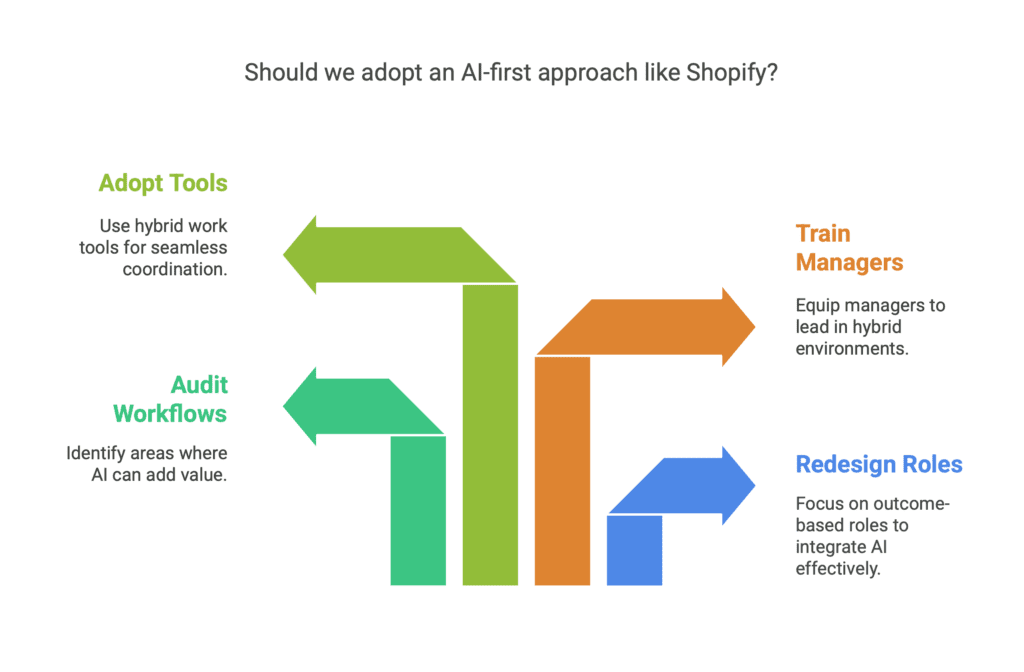
What Companies Should Be Doing Now
If you’re a business leader watching Shopify’s move and wondering, “Should we be doing the same?”—here’s the short answer:
You should at least be laying the groundwork.
That means:
- Redesign roles around outcomes, not job descriptions.
- Audit workflows to see where AI can genuinely add value.
- Train your managers to lead in flexible, hybrid, async environments.
- Adopt hybrid work tools that make coordination seamless and visible.
- Invest in scheduling intelligence, so people can focus on work, not logistics.
You don’t need to go all-in on AI-first hiring tomorrow. But you do need a workplace that can evolve quickly, integrate new capabilities, and empower both humans and machines to do their best work.
That’s what Kadence helps teams do every day.
Final Thought
Just like remote-first signaled a new era of work back in 2020, AI-first is now doing the same. But this shift is even bigger. It doesn’t just change where we work—it changes who or what does the work, how it gets done, and how fast we adapt.
If your company has already embraced hybrid work, you’re not behind. You’ve already made the leap most organizations are still resisting: moving from rigid structures to flexible systems built on trust, autonomy, and measurable outcomes.
But don’t stop there. Now’s the moment to future-proof your operations:
- Double down on async workflows that accommodate both humans and AI
- Invest in tools that prioritize coordination over control
- Rethink roles to leverage both human strengths and machine efficiency
This isn’t just evolution. It’s a reinvention. And Kadence is built to help you lead that change.
Book a demo today and see how Kadence can help your team work smarter—wherever, whenever, and however work gets done.



